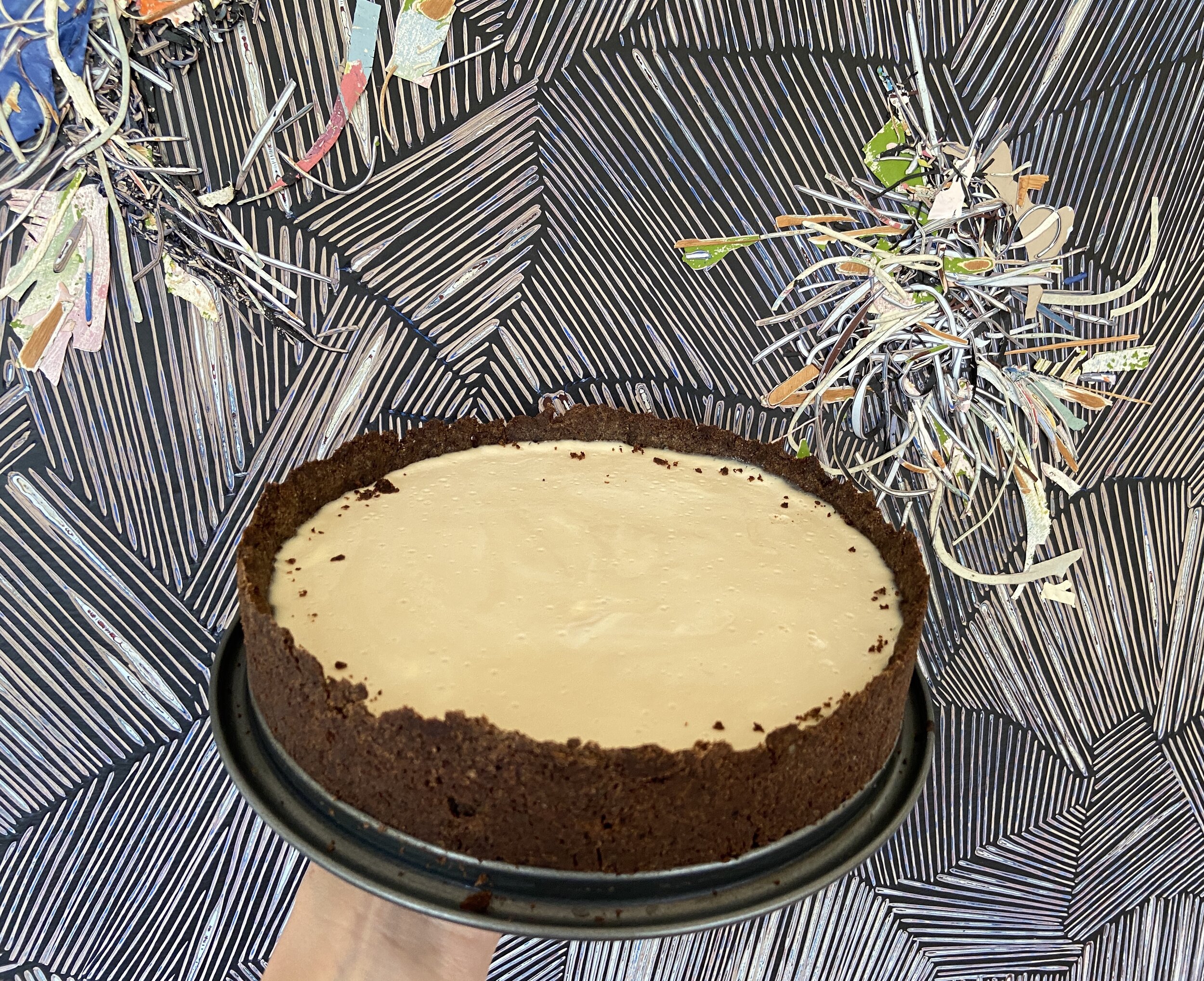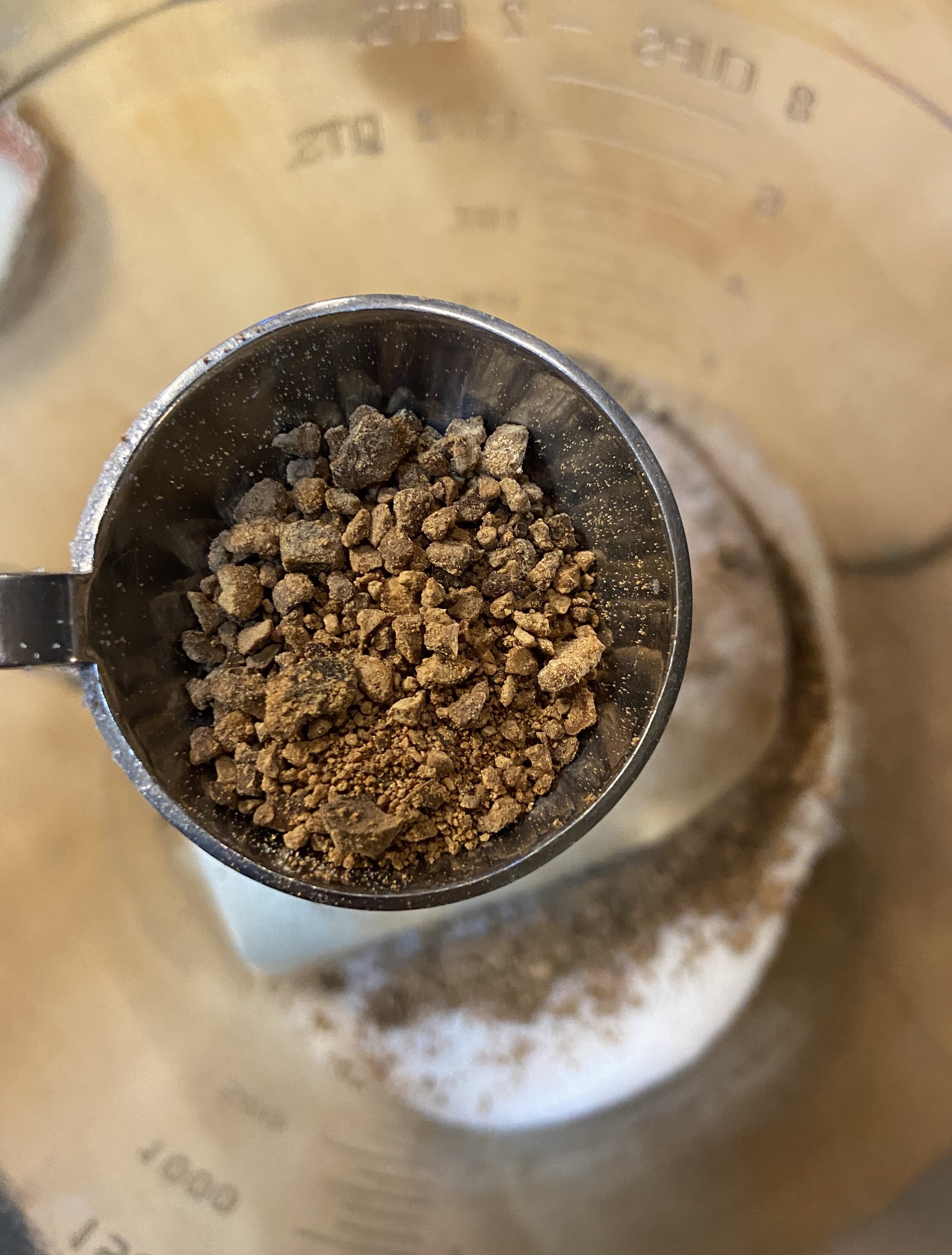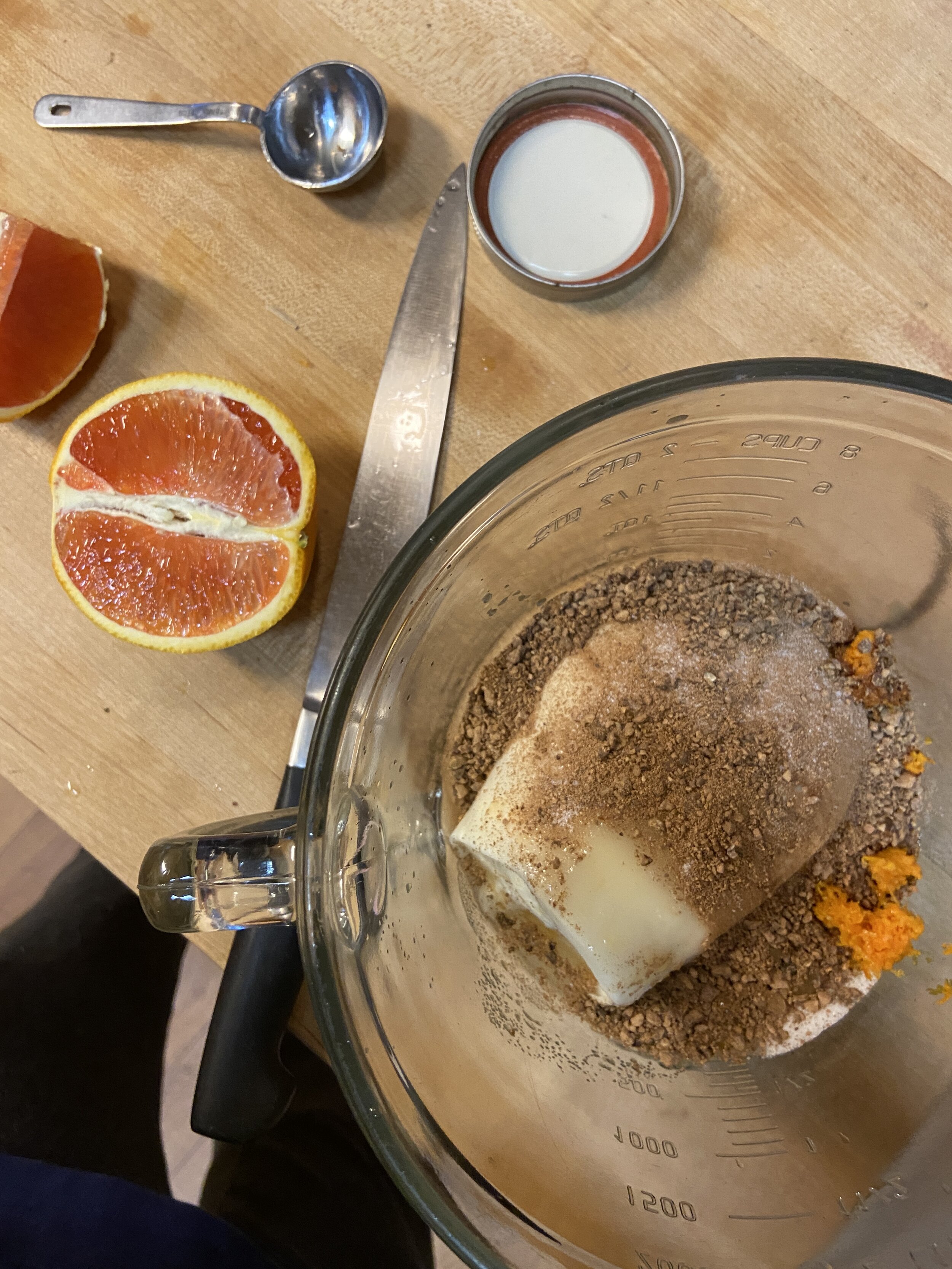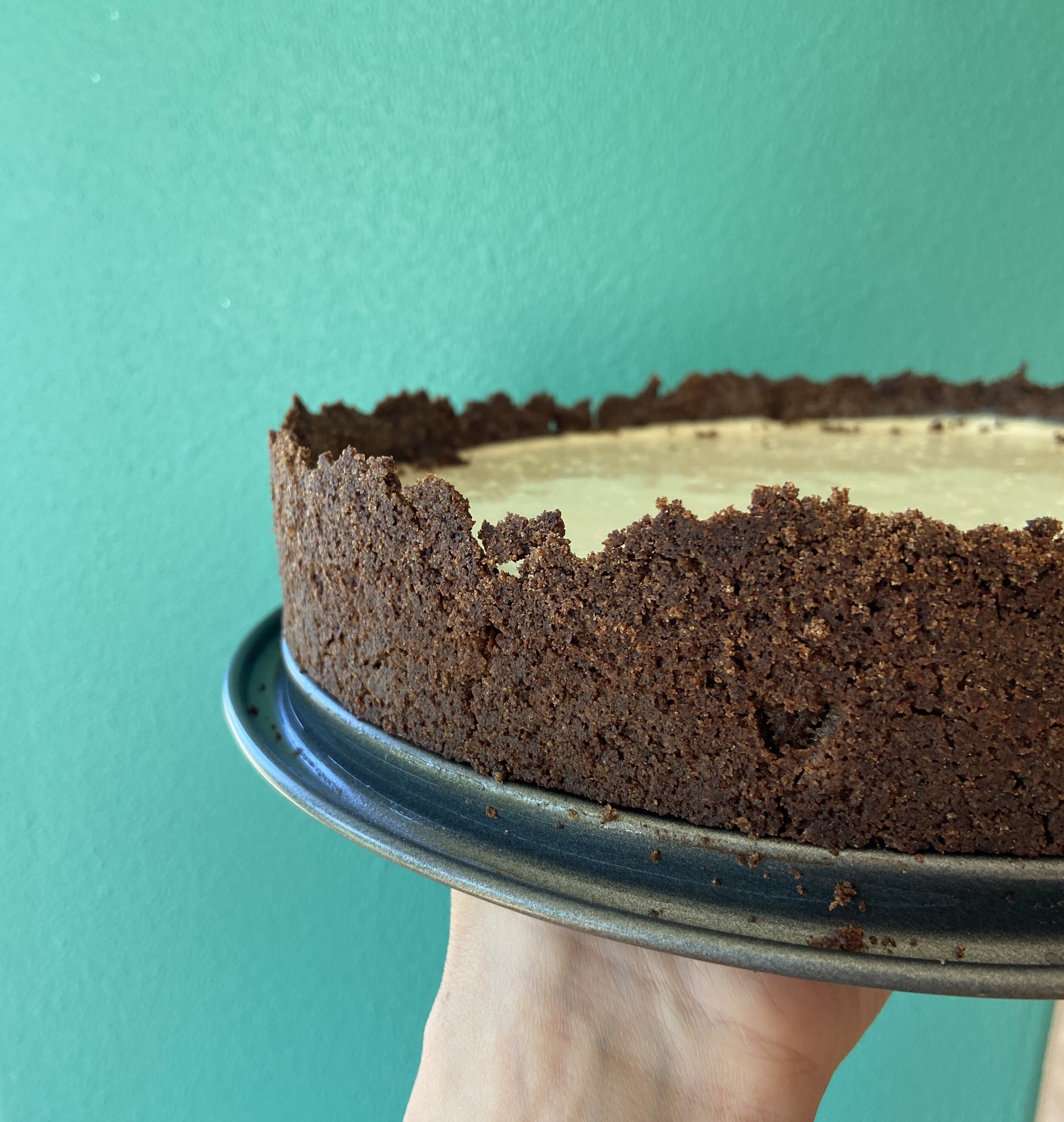Bay Nut Mole Negro
Foraged bay nuts give the chocolate-coffee flavor you're looking for in a mole.

Most mole recipes leave me feeling overwhelmed and in a too-many-ingredients comatose. This one, although it does take about 2 hours to prepare, it a lot more approachable and some of that time is inactive, which means you can spend it on your other side dishes. Yes, this recipe is likely not as complex as others you may find, but even just with two chiles and some other key ingredients, you can create a delicious and robust mole negro.
“As bay nuts do not contain sugar or cinnamon, I added a little of each. If you don’t have bay nuts, replace them with mexican chocolate (such as Ibarra) and skip the brown sugar and cinnamon. ”
Also unique to this mole is that instead of the traditional chocolate, I chose to use bay nuts. Bay nuts are a foraged find from the bay laurel tree (more on bay nuts and foraging here). The bay nut is a member of the avocado family that, when roasted, becomes akin to a combination of chocolate and coffee - ideal for mole. Recipe serves 6.
2.5 pounds skinless chicken thighs and/or legs
~1-2 teaspoons salt
2 tablespoons grapeseed (or other neutral flavored oil), divided
1.5 cups low sodium chicken broth
Juice and zest from 2 blood oranges
2 cinnamon sticks
1 yellow onion, chopped
1/4 cup almonds, chopped
3 large garlic cloves, diced
2 teaspoons cumin seeds
2 teaspoons coriander seeds
1.5 ounces dried pasilla chiles, stemmed, seeded, and torn into strips
0.5 ounces dried negro chiles, stemmed, seeded, torn into strips
3 prunes, chopped
1 teaspoon dried oregano
2 ounces roasted bay nuts, chopped (mexican chocolate can be substituted for bay nuts, brown sugar, and cinnamon)
1 tablespoon brown sugar
Chopped fresh cilantro, queso fresco, avocado, and corn tortillas (to serve)
Rub chicken all over with salt. Heat 1 tablespoon oil in large pot (I use my large Le Creuset pot) over medium-high heat. Brown chicken on both sides, about 3 minutes per side.
Add broth, blood orange juice, and cinnamon sticks then bring to a boil. Reduce heat to medium-low; cover and simmer until chicken is tender and just cooked through, about 25 minutes.

Meanwhile, heat remaining 1 tablespoon oil in large saucepan over medium heat. Add onions and garlic and sauté until softened and beginning to caramelize, about 10-12 minutes, stirring occasionally. Add almonds, cumin, coriander, and chiles. Reduce heat to medium-low and cook while stirring until chiles soften, about 4 minutes.
Using tongs, transfer chicken from pot to large bowl. Pour chicken cooking liquid into saucepan with onion-chile mixture (reserve pot). Add blood orange zest, prunes, oregano, bay nuts, and brown sugar to saucepan. Cover and simmer until chiles are very soft, stirring occasionally, about 30 minutes. Remove cinnamon sticks and discard.
Transfer sauce mixture to food processor or blender and purée until smooth; return to reserved pot. Season sauce to taste with salt. Coarsely shred chicken and return to sauce; stir to coat and re-heat chicken.
Serve topped with cilantro springs, avocado, corn tortillas, and queso fresco (if desired).
Pair with: Vinegary red cabbage slaw (the vinegar is a great contrast to the dark, rich mole), roasted delicata or butternut squash.

Bay Nut Ricotta Cake
A lovely use of foraged and roasted bay nuts

Cake in foreground, my brother’s art in background.
Here’s the deal: everyone likes coffee and chocolate. Okay, so that may not be entirely true, but who are we kidding? I probably don’t want to associate with those individuals anyway.
For those of us with *good* taste, the knowledge that there is a wild edible commonly found on the West Coast (the bay nut - more including foraging info here) that, when roasted, produces a flavor that can be likened to a combination of coffee and (bitter) chocolate is mind blowing. Now think about taking that amazing ingredient and adding it to a ricotta cheesecake - not bad. This brings us to the bay nut ricotta cake (which is really more of a tart, but using cake since a ricotta cake might be more familiar to some…)
“A graham cracker crust also works, but doesn’t have the same rustic qualities as buckwheat flour. Buckwheat is also gluten free - make the dessert gluten free by replacing the all purpose flour with a gluten free substitute. An entirely buckwheat crust can work, but is a little too crumbly. ”

Crust Ingredients
3 tablespoons ground bay nuts (medium grind, as you would for french press coffee). You can use a coffee or spice grinder or chop with a knife.
1 cup buckwheat or other flour of choice (can use all -purpose, but crust won’t be as dark)
2 tablespoons all purpose flour (to help bind - if you want the cake to be gluten free, use another gluten free flour mix)
1/3 cup granulated sugar
1/4 teaspoon salt
7 tablespoons unsalted butter
1-2 tablespoons cold milk or water

Filling Ingredients
16 ounces ricotta cheese
1/3 cup granulated sugar
1/4 cup roasted bay nuts, ground (medium grind, as you would for french press coffee). You can use a coffee or spice grinder or chop with a knife. Coarsely ground also works for more definition/larger chunks.
1 egg, lightly beaten
2 teaspoons juice from an orange (optional)
1 teaspoon orange zest (optional)
Topping Ingredients
8 oz. sour cream
3 tablespoons sugar
1 teaspoon vanilla extract
Preheat oven to 350 degrees F and grease a springform pan.
For crust: Mix 3 tablespoons bay nuts, flours, 1/3 cup sugar, and salt. Cut in butter with pastry blender, fork, or fingers and mix until pea-sized crumbs. Add water or milk until dough comes together when pressed, but is not too wet. Press into greased 9” springform pan and bake for 12-15 minutes until firm and lightly browned on edges. Remove from oven and cool completely.
For filling: Whisk filling ingredients until thoroughly mixed. Pour onto cooled shell, bake in oven for about 35-50 minutes, until cake is set and jiggles only slightly. You make need to cover with foil if the crust edges become too brown.
For topping/final step: Remove from oven and let stand for 15-20 minutes while you mix together the topping ingredients. Spread out topping mixture and put back in the oven for another 10 minutes. Remove and cool until served.

Crust me! I like to smash the crust up higher than the filling will be for a more dramatic rustic look.
Bay Nuts
The cacao-coffee bean of foraged finds.
Here’s the deal: everyone likes coffee and chocolate. Okay, so that may not be entirely true, but who are we kidding? I probably don’t want to associate with those individuals anyway.

For those of us with *good* taste, the knowledge that there is a local edible easily foraged that, when roasted, produces a flavor that can be likened to a combination of coffee and (bitter) chocolate is mind blowing.
Where to find them: From the West Coast/California bay laurel tree, Umbellularia californica. This may sound obvious, but the bay tree does not always have nuts - the nuts appear from October - December, or even as early as September in Central California or when it's an especially hot year. Also, some years are better than others and some produce only a small amount of nuts - just because you don't find nuts on a tree one year doesn't mean they won't be there the next!
The bay tree leaves can (and should? why buy?) be used as you would use bay leaves purchased from the grocery store, but are very strong, with a ratio of 3:1 (tree bay leaf: store bought bay leaf).


The nut itself is a close relative of the avocado (Lauraceae family) and it looks like an avocado pit with a thin layer of flesh. The flesh goes from a bright green (unripe) to purple (ripe) and is technically edible, but rots very quickly. You'll know it's rotten when the outside is a goopy, gross, mess “this-will-make-you-sick” texture. The real treat is when you roast the nut itself on the inside of the flesh. Before roasting, or if not roasted properly, the nut is extremely bitter and astringent, similar to acorns and olives before they are cured. You will NOT want to eat the nut before roasting.
To roast the nut:
Peel off that goopy exterior. Sometimes you can find the nuts by their lonesome, in which case, score! Less to do. Sometimes, you peel them and they look fine. Othertimes, you peel them and they look gross/moldy - throw these ones out.
Wash the nuts - remove any excess goop.
Dry the nuts. I have seen directions indicating that the nuts need to be dried then stored for 1-2 years, but I don't have the patience for that and in my experience it just takes a few weeks in the dry climate of the Bay Area to remove the moisture. To dry, lay them out to open air until the water evaporates then store in paper bags or other breathable containers (an open bowl or jar) in the dark.
Roast the nuts on a baking sheet in a single layer at 350 degrees F. This usually takes about 1 to 1.5 hours, but you’ll know they’re done when the insides look brown/black (some will crack open to reveal this). Some recipes call for 450 degrees F for 45 minutes - I previously said that either way works, but have heard that 450 makes them too toasty too fast. Up to you, but I would check them every 20 minutes or so.
Crack open the shells with a nut cracker (teeth also work, but everyone cringes when I do that) and eat the nuts as you choose. They have a slightly bitter taste, but for those that like super dark chocolate, it’s delicious. Note that bay nuts possess a mildly stimulating effect, similar to caffeine.
Suggested uses (so far, I’m still experimenting):

One their own (haven’t made them covered in chocolate yet, but I’m sure this would be decadent and plan to do so). Pairing with whiskey is awesome.
Bay nut mole - substitute chocolate for bay nuts. Don’t look back.
Bay nut ricotta cheesecake - I have done this twice now and the recipe is lovely.
Bay nut brittle
Bay nut hot cocoa?
Bay nut chocolate bars - working with the Culinary Institute to make this happen, but I know that Madre Chocolate has done it in the past!






